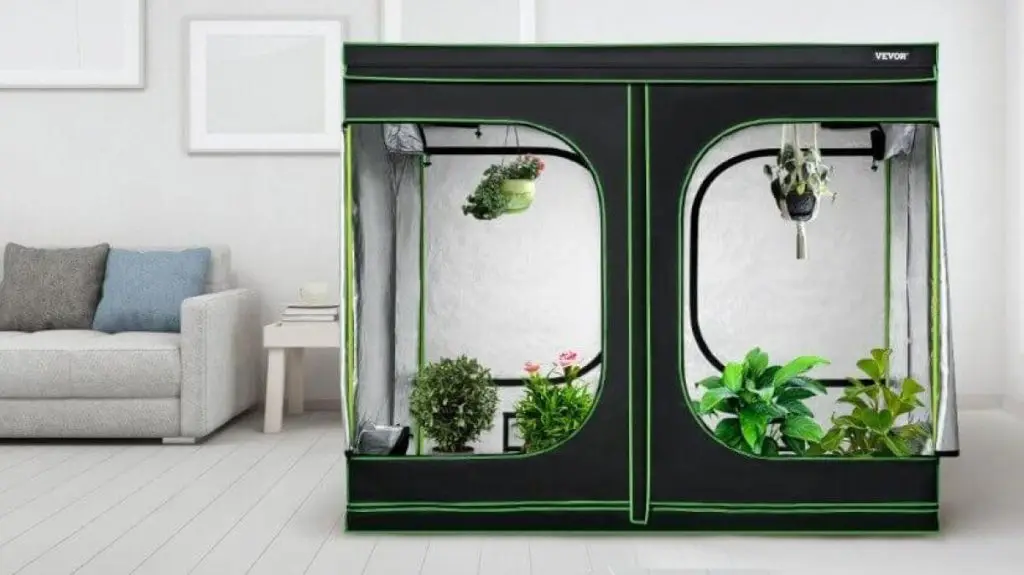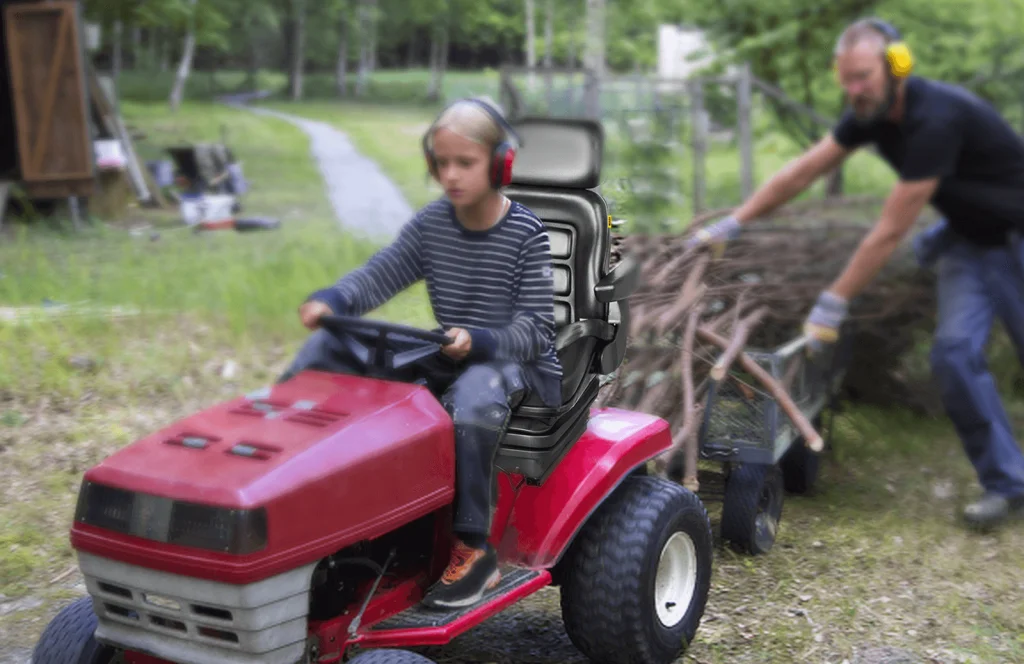Gardeners have debated the merits of landscape plastic vs fabric for decades. While both materials act as weed blockers, each has unique advantages and disadvantages to consider. Choosing the right weed barrier is key to maintaining a healthy, flourishing garden.
Landscape plastic and fabric prevent light from reaching weed seeds, stopping them from germinating. This saves hours spent pulling weeds. However, the two materials vary in durability, appearance, environmental impact, and effectiveness in different situations.
This guide will unveil the pros and cons of plastic and fabric weed barriers. You’ll discover which material reigns supreme for specific gardening needs, from vegetable patches to flower beds. Let’s explore!
Table of contents
Understanding Landscape Plastic
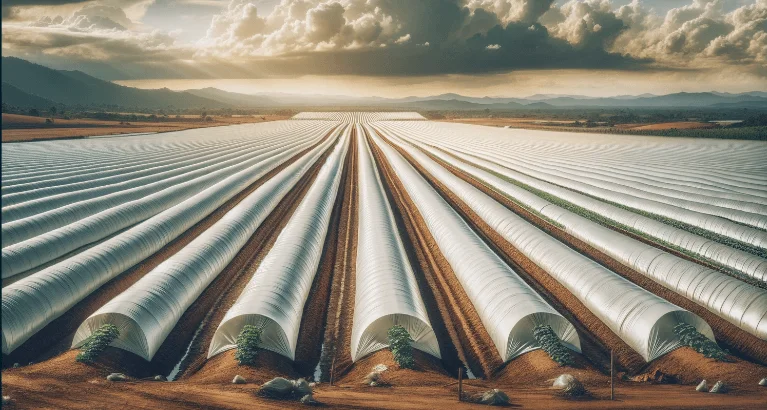
Landscape plastic, also called plastic mulch, refers to polyethylene sheets placed over soil to suppress weed growth. The impermeable plastic blocks light and moisture from activating weed seeds. Landscape plastic also helps retain soil moisture and warmth to benefit plants.
Pros of Landscape Plastic
- Prevents 95% of weeds from sprouting when installed properly
- Traps moisture and heat for better plant growth
- Can be installed via tilling or laying atop the soil
- Smooth surface deters slugs and snails
- Provides a tidy, uniform appearance between garden rows
- Comes in various colors to warm or cool soil as desired
- Allows earlier spring planting due to warmth under plastic
- Repels some garden pests like snakes due to slippery surface
Cons of Landscape Plastic
- Degrades quickly, requiring replacement each season
- Doesn’t stop weeds from growing through holes/tears
- Can’t be used for perennial plantings
- Not eco-friendly; made from polyethylene
- Can blow away or shift in very windy conditions
- Water and gasses don’t penetrate plastic, requiring drip irrigation
- Must be removed carefully to avoid disturbing plant roots
- Can leach chemical additives into the soil over time
- Creates large amounts of waste with annual disposal
Exploring Landscape Fabric
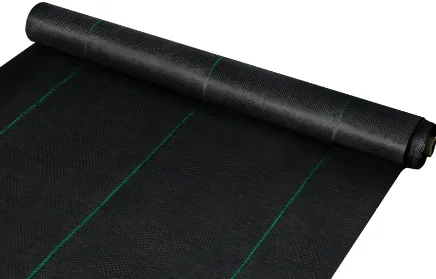
Landscape fabric, also called geotextile fabric or weed cloth, refers to woven or nonwoven polypropylene material laid over soil. The fabric blocks light to stop photosynthesis and weed growth but allows air, water, and nutrients to permeate.
Benefits of Landscape Fabric
- Offers superior weed control for up to 5 years
- Maintains soil temperature and moisture
- Allows planting perennials without removing fabric
- Cost-effective long-term weed solution compared to frequent plastic replacement
- Can be reused for many years if carefully removed and stored at the end of each growing season
- Less disruptive to plant roots than plastic since it doesn’t need annual removal
- Variety of styles from water-permeable to total blockage depending on needs
Limitations of Landscape Fabric
- Can shift over time, leaving soil exposed if not installed correctly
- Weeds can take root in small holes that form in the fabric
- Not an aesthetic appearance; requires covering with a thick, attractive mulch
- When compressed by weight, fabric may impede water and airflow to plant roots
- Removing large established weeds can disturb the landscape fabric
- Must be cut very carefully when planting new plants to avoid new weed growth
- Durability diminishes if exposed to UV rays for extended periods of time
Landscape Plastic vs Fabric Showdown: Which Reigns Supreme
Battle in the Vegetable Garden: Plastic vs. Fabric
For vegetable gardens, plastic mulch reigns supreme over landscape fabric. Plastic warms soil nicely to promote faster growth for heat-loving veggies like tomatoes, peppers, and eggplant. The smooth surface deters snails and slugs from munching seedlings. Plastic mulch must be removed and replaced annually; landscape fabric would involve too much disruption to plant roots. For short-term vegetable gardens, plastic mulch is the clear winner.
When using black plastic in the garden to warm the soil, the results are clear. Plastic mulch provides an impermeable barrier that boosts soil warmth, allowing earlier planting of warm-season crops. The increased heat units speed germination and plant growth.
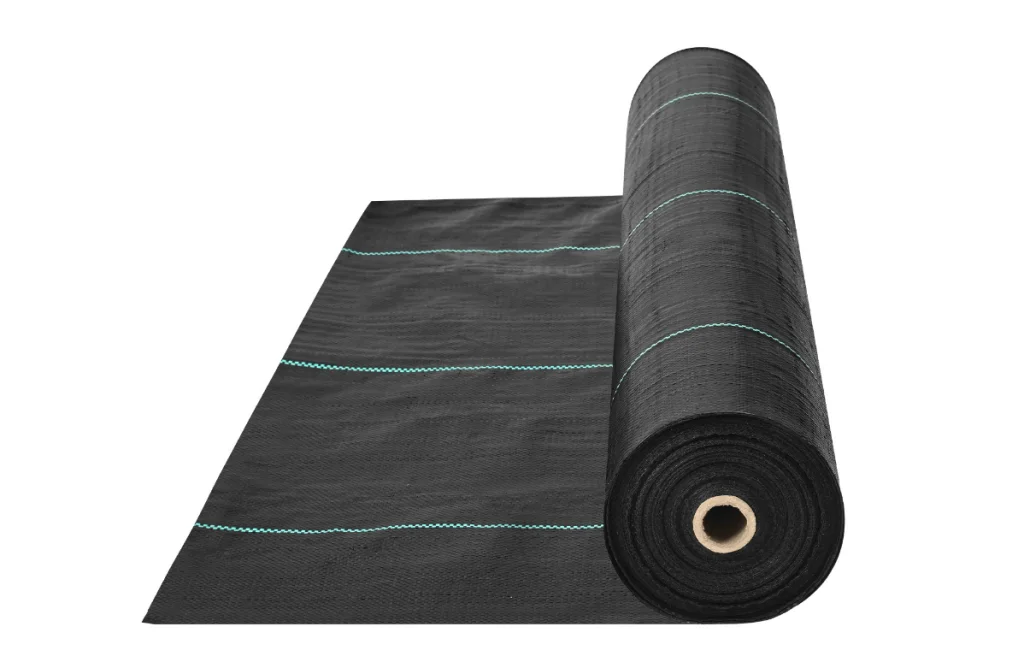
Plastic mulch helps soil remain moist and prevents nutrient leaching. It controls weeds extremely well during the growing season. The slick surface also deters crawling pests. Replacing plastic mulch annually provides a fresh, sterile planting surface, minimizing disease.
However, landscape fabric has some drawbacks when used in vegetable gardens. Durability isn’t as important for short-season annual crops. And fabric can compress over time, reducing airflow and water permeability. The material must be cut precisely when planting transplants to avoid weeds emerging through holes. Plastic mulch is simply better suited for intensive vegetable cultivation.
Ideal Choice for Flower Beds: Landscaping Fabric vs Plastic
When it comes to ornamental flower beds, both plastic and fabric weed barriers have benefits. Plastic mulch offers a perfectly smooth, uniform look between plants. The material comes in various colors to reflect light and alter soil temperature. Yet plastic lacks long-term durability, often degrading before a full growing season ends.
Landscape fabric, when topped with an attractive mulch layer, provides sustained weed suppression for years. Its longevity makes it ideal for use under perennials and shrubs. Landscape fabric allows moisture and nutrients to pass through while blocking light. This breathability promotes healthy soil and plant growth. For short-lived annual flowers, plastic mulch can work. But for permanent beds of perennials and shrubs, fabric is the better choice.
Effectiveness in Weed Control
When optimally installed, both plastic and fabric provide effective weed prevention, but landscape fabric offers more sustained results. Plastic mulch can block 95% of weeds if laid precisely with complete coverage. But it easily tears, allowing weeds to poke through gaps or holes. Grass and other weeds will emerge around the edges of plastic sheeting.
When comparing black plastic vs landscape fabric for weed control, the fabric often wins out long-term. Quality landscape fabric blocks roughly 85% of weeds from sprouting for multiple years. Some persistent weeds can poke through small holes that develop in the material.
But overall, landscape fabric provides excellent long-term weed suppression. It eliminates the need to rip out plastic sheeting annually, disturbing soil and plant roots. For sustained weed control with less waste, landscape fabric is the winner.
Durability and Environmental Impact
One key factor setting landscape fabric apart from plastic mulch is its durability and eco-friendliness. Plastic degrades rapidly, becoming brittle and tearing after just one season of use. It must be removed and replaced annually, creating significant plastic waste.
Landscape fabric lasts 5-10 years or more when properly installed. This longevity makes it a much greener option.
Disposable plastic mulch contributes substantially to environmental waste. But quality UV-treated landscape fabric can suppress weeds without replacement for years on end. Less frequent disposal reduces the fabric’s impact. Some types are even made from recycled plastic bottles.
For gardeners wanting effective weed control with minimal environmental impact, landscape fabric is the clear eco-friendly choice.
Mulching Over Landscaping Fabric vs. Plastic
Applying mulch over landscape fabric helps hide the material and further blocks light and weeds. But plastic resists water penetration when mulched. Excess water pools on the surface increase disease risk. With fabric, moisture soaks through while the mulch masks the material’s appearance.
Choosing plastic or landscape fabric under rock or bark mulch depends on the site. Plastic gives a smooth look but can cause moisture issues. Landscape fabric allows better permeability but has a rougher textured appearance if exposed. Determine whether plastic sheeting or landscape fabric better suits the area.
Installing Landscape Fabric vs. Plastic Sheeting
Installing plastic mulch requires tilling or herbicide treatment before laying plastic sheets. Landscape fabric can simply be rolled out atop soil; some types can even be laid over existing weeds. This ease of installation makes fabric better suited for larger areas. Plastic works best in smaller spaces like vegetable beds.
Plastic sheeting vs. landscape fabric has different installation requirements. Plastic mulch works best installed over tilled, weed-free soil for maximum contact. Landscape fabric can be laid directly on grass or over existing vegetation, saving labor.
When using a garden with black plastic in the garden, securing the edges is crucial to prevent lifting. Landscape fabric is more forgiving if shifted.
VEVOR Weed Barrier Landscape Fabric: The Optimal Choice
VEVOR offers a commercial-grade landscape fabric perfect for residential, commercial, and agricultural needs. This polypropylene fabric provides over 5 years of durable weed control. The tightly woven material blocks over 85% of emerging weeds while allowing air and water circulation. An optimal balance!
Why Choose VEVOR Landscape Fabric?
Boasting reinforced stitching and UV resistance, VEVOR fabric is highly tear-resistant, with up to 150 lbs. force. It’s incredibly durable for the price. The fabric’s breathability promotes healthy soil as it deters weeds. And it cuts out light to a depth of 2-3 cm to curb photosynthesis and growth. For long-term weed suppression that’s easy to install, choose VEVOR.
FAQs about Landscape Plastic vs Fabric
Q: What’s the main difference between landscape fabric and plastic?
A: Plastic forms an impenetrable barrier that degrades quickly. The fabric allows air and moisture through while offering durable weed prevention.
Q: How often should I replace landscape fabric or plastic?
A: Plastic mulch requires annual replacement. Quality landscape fabric lasts 5 years or more before needing replacement.
Q: Is landscape fabric or plastic better for vegetable gardens?
A: Plastic mulch is preferred for veggie gardens since it warms the soil for heat-loving plants. The fabric would disturb vegetable roots each year when installing transplants.
Q: Are landscape fabric and plastic environmentally friendly?
A: Plastic mulch produces waste each year and must be disposed of or recycled properly. Landscape fabric is the greener choice, with some types even being made from recycled plastic bottles. When cared for, fabric lasts years to avoid frequent disposal.
Summing up
When it comes to weed suppression, both landscape plastic and fabric have benefits. Plastic mulch excels at blocking light to prevent weed seed germination. But its lack of durability makes it less sustainable. Landscape fabric allows air and water circulation while providing long-term weed prevention. This breathability also nurtures healthy soil.
When covered with an attractive mulch, the fabric remains effective for 5 years or more. Its longevity and ease of installation make landscape fabric the superior choice for most gardens. For vegetable plots, plastic mulch boosts warmth-loving crops.
But for ornamental beds, fabric’s sustained weed prevention reigns supreme. Invest in quality commercial-grade landscape fabric, and you’ll reap the rewards through seasons of lush, flourishing plants with fewer pesky weeds. Discover VEVOR landscape fabric for an optimal balance of weed control and soil breathability in your garden. Your plants will thrive for years to come.



